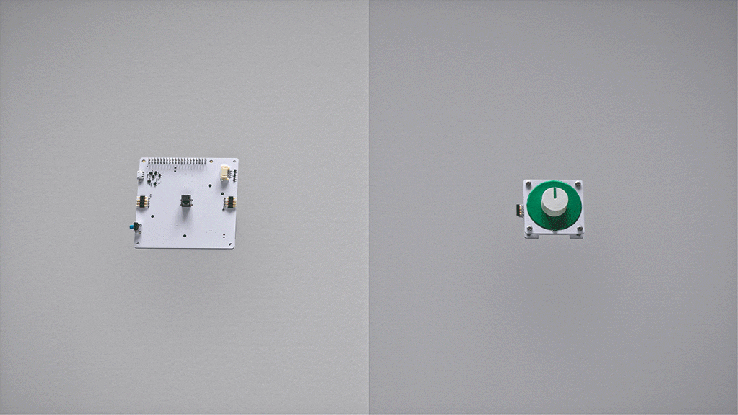Coding : more than a job skill, it is a new literacy for the 21st century
In the 1960s, Seymour Papert advocated that all children should learn computer programming. Today, finally, millions of students are learning it, but there is a lot of work to be done to truly democratize this new literacy. Project Bloks is a platform to enable designers to create new and creative tangible coding languages and kits for children. Ultimately we want to offer a powerful and open hardware and software platform that makes it easy to invent novel ways for children to learn how to code, using new form factors, metaphors, and knowledge domains.

Google today announced Project Bloks, a new open hardware platform that allows developers, designers and educators to build physical programming experiences that can help kids (5+) learn to code.
Physical coding
Kids are inherently playful and social. They naturally play and learn by using their hands, building stuff and doing things together. Making code physical - known as tangible programming - offers a unique way to combine the way children innately play and learn with computational thinking.
However, designing kits for tangible programming is challenging—requiring the resources and time to develop both the software and the hardware. Our goal is to remove those barriers. By creating an open platform, Project Bloks will allow designers, developers and researchers to focus on innovating, experimenting and creating new ways to help kids develop computational thinking. Our vision is that, one day, the Project Bloks platform becomes for tangible programming what Blockly is for on-screen programming.
The Project Bloks system
We’ve designed a system that developers can customise, reconfigure and rearrange to create all kinds of different tangible programming experiences.
The Project Bloks system is made up of three core components the “Brain Board”, “Base Boards” and “Pucks”. When connected together they create a set of instructions which can be sent to connected devices, things like toys or tablets, over wifi or Bluetooth.
The three core components of the Project Bloks system
Pucks: abundant, inexpensive, customisable physical instructions
Pucks are what make the Project Bloks system so versatile. They help bring the infinite flexibility of software programming commands to tangible programming experiences. Pucks can be programmed with different instructions, such as ‘turn on or off’, ‘move left’ or ‘jump’. They can also take the shape of many different interactive forms—like switches, dials or buttons. With no active electronic components, they’re also incredibly cheap and easy to make. At a minimum, all you'd need to make a puck is a piece of paper and some conductive ink.
Pucks allow for the creation and customisation of endless amount of different domain-specific physical instructions cheaply and easily.
Base Boards: a modular design for diverse tangible programming experiences
Base Boards read a Puck’s instruction through a capacitive sensor. They act as a conduit for a Puck’s command to the Brain Board. Base Boards are modular and can be connected in sequence and in different orientations to create different programming flows and experiences.
The modularity of the Base Boards means they can be arranged in different configurations and flows
Each Base Board is fitted with a haptic motor and LEDs that can be used to give end-users real time feedback on their programming experience. The Base Boards can also trigger audio feedback from the Brain Board’s built-in speaker.
Brain Board: control any device that has an API over WiFi or Bluetooth
The Brain Board is the processing unit of the system, built on a Raspberry Pi Zero. It also provides the other boards with power, and contains an API to receive and send data to the Base Boards. It sends the Base Boards’ instructions to any device with WiFi or Bluetooth connectivity and an API.
As a whole, the Project Bloks system can take on different form factors and be made out of different materials. This means developers have the flexibility to create diverse experiences that can help kids develop computational thinking: from composing music using functions to playing around with sensors or anything else they care to invent.
The Project Bloks system can be used to create all sorts of different physical programming experiences for kids
The Coding Kit
To show how designers, developers, and researchers might make use of system, the Project Bloks team worked with IDEO to create a reference device, called the Coding Kit. It lets kids learn basic concepts of programming by allowing them to put code bricks together to create a set of instructions that can be sent to control connected toys and devices—anything from a tablet, to adrawing robot or educational tools for exploring science like LEGO® Education WeDo 2.0.
"Project Bloks - Creating A Development Platform For Tangible Programming". Project Bloks. N.p., 2016. Web. 28 June 2016.













0 comments: